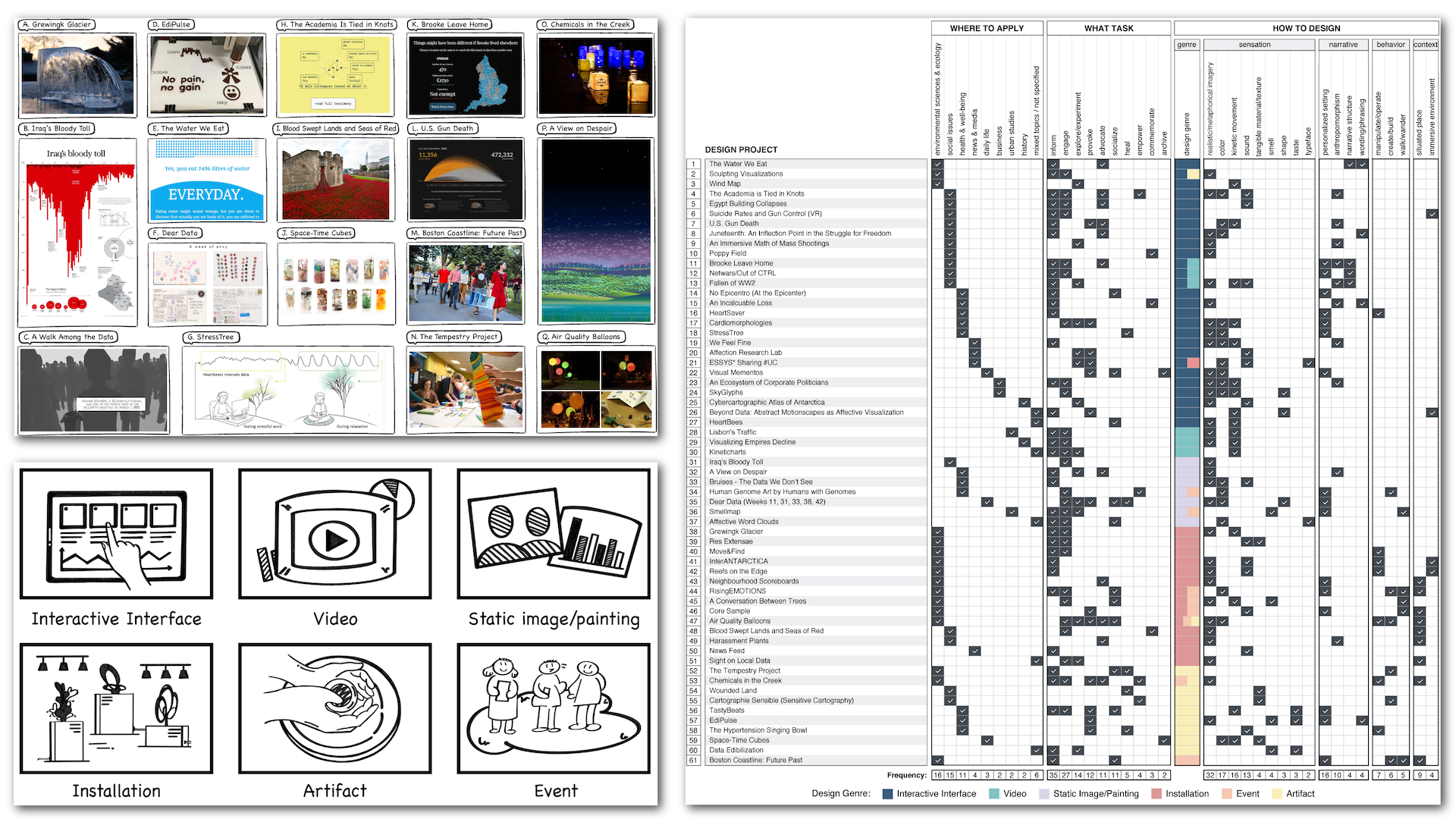Best Paper Award
Affective Visualization Design: Leveraging the Emotional Impact of Data
Xingyu Lan, Yanqiu Wu, Nan Cao
DOI: 10.1109/TVCG.2023.3327385
Room: Plenary-1
2023-10-24T03:00:00ZGMT-0600Change your timezone on the schedule page
2023-10-24T03:00:00Z

Fast forward
Full Video
Keywords
Information Visualization;Affective Design;Visual Communication;User Experience;Storytelling
Abstract
In recent years, more and more researchers have reflected on the undervaluation of emotion in data visualization and highlighted the importance of considering human emotion in visualization design. Meanwhile, an increasing number of studies have been conducted to explore emotion-related factors. However, so far, this research area is still in its early stages and faces a set of challenges, such as the unclear definition of key concepts, the insufficient justification of why emotion is important in visualization design, and the lack of characterization of the design space of affective visualization design. To address these challenges, first, we conducted a literature review and identified three research lines that examined both emotion and data visualization. We clarified the differences between these research lines and kept 109 papers that studied or discussed how data visualization communicates and influences emotion. Then, we coded the 109 papers in terms of how they justified the legitimacy of considering emotion in visualization design (i.e., why emotion is important) and identified five argumentative perspectives. Based on these papers, we also identified 61 projects that practiced affective visualization design. We coded these design projects in three dimensions, including design fields (where), design tasks (what), and design methods (how), to explore the design space of affective visualization design.